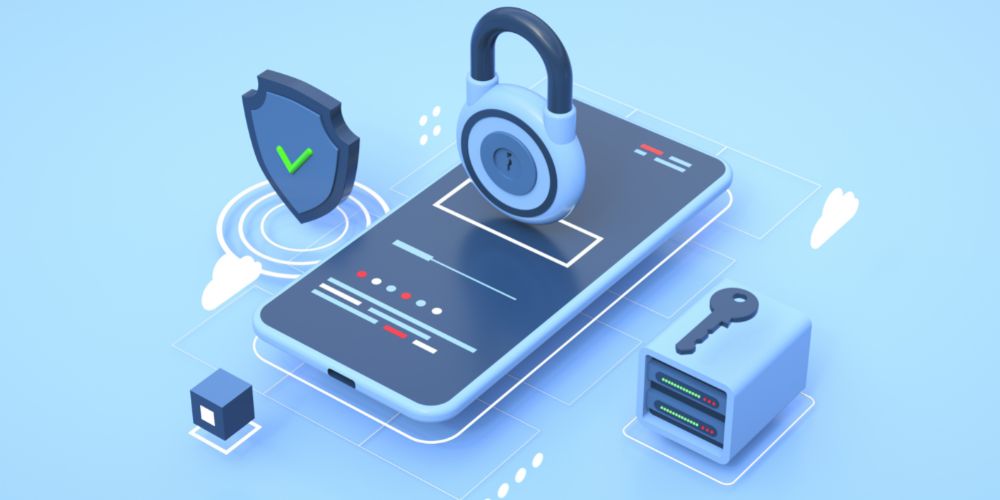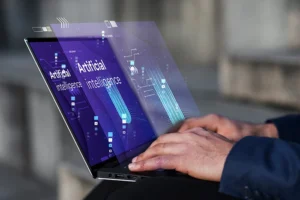
The world of technology is advancing rapidly. Hot on the heels of this rapid advancement is a significant increase in cyber risk.
We rely more and more on digital devices and internet connectivity to be able to store, process, and transmit information. This increased usage opens our businesses up to an increased surface area of attack.
IT security is now a critical aspect of modern businesses. Despite the best efforts of IT security professionals, cyber risks are always looming. They’ll continue to evolve and become more sophisticated, making it essential to stay up to date on the latest threats to IT security.
In this article, we explore the biggest threats to IT security in the current digital landscape.
7 Of The Biggest Threats To IT Security
There are many cyber risks to be aware of so we’ll cover seven of the largest threats and / or most common ones.
Ransomware
Ransomware is one of the most dangerous cyber risks that organizations face today. It is a type of malware that encrypts an organization’s data and demands a ransom payment in exchange for the decryption key. Ransomware attacks have become more common and sophisticated in recent years. They can have devastating consequences for businesses and organizations. In some cases, the attackers may not even provide the decryption key after the ransom is paid, making it critical for organizations to take preventive measures to protect against ransomware attacks.
Phishing
Phishing is a type of social engineering attack that is used to trick individuals into revealing sensitive information, such as login credentials, credit card numbers, or other personal information. Phishing attacks are often carried out through email, SMS, or instant messaging. They can be highly effective if the target falls for the scam. To protect against phishing attacks, individuals and organizations should be cautious of unsolicited emails or messages that request personal information. They should always verify the sender’s identity before providing any sensitive information.
Advanced Persistent Threats (APTs)
Advanced persistent threats (APTs) are highly sophisticated attacks that are designed to remain undetected for long periods of time while they gather sensitive information. APTs are usually carried out by state-sponsored hackers or criminal organisations. They are typically directed at high-value targets, such as government organizations, financial institutions, or major corporations. APTs can be difficult to detect and even more difficult to protect against, making it essential for organisations to have robust security measures in place to prevent or mitigate the impact of this type of cyber risk.
Zero-Day Exploits
A zero-day exploit is a security vulnerability in a piece of software that is discovered and exploited by attackers before it can be patched by the software vendor. A good example of a zero-day exploit took place in 2020 when the business world adopted Zoom meetings. A security vulnerability in their software enabled hackers to remotely access a user’s device if they were using an older version of Windows. This was soon patched.
Zero-day exploits can be used to take control of an affected system, steal sensitive information, or install malware. This type of opportunity is highly sought after by attackers. They can be extremely difficult to protect against as they are unknown to the software vendor and the wider security community.
Man-in-the-Middle (MitM)
A Man-in-the-Middle (MitM) attack is a type of cyber-attack in which an attacker intercepts and alters communications between two parties, effectively “standing in the middle” of the exchange. This can be done in several ways, such as by compromising a network router or by using a rogue wireless access point. This type of cyber risk is very common in unsecured or free networks, such as public wifi in coffee shops.
Malware
A malware attack, short for malicious software attack, is a type of cyber risk in which an attacker gains access to a device or network by delivering harmful software, known as malware, to the target system. Malware can take many forms, including viruses, worms, Trojans, ransomware, and spyware, among others.
Insiders
Insiders pose a significant threat to IT security, as they often have privileged access to sensitive information and systems. Insider threats can include employees who deliberately or accidentally cause harm, contractors who misuse their access, or former employees who continue to have access to sensitive information. To protect against insider threats, organizations should implement robust access controls, monitor for unusual activity, and have strict policies in place for handling sensitive information.
Cyber Risk: The Consequences Of A Data Breach And How To Prevent It
It is important to firstly consider the consequences of cyber threats. They can be severe and far-reaching, affecting both personal and professional life.
Some of the common consequences include financial losses, damage to reputation and brand image, theft of sensitive information, and legal repercussions. Cyber-attacks can also lead to a loss of customer trust and confidence, which can have long-term impacts on the success of your business.
Cyber risk can also lead to indirect costs, such as lost productivity, reduced competitiveness, and decreased employee morale. Businesses that are not prepared for cyber-attacks can experience disruption to their operations, which can be costly and time-consuming to resolve.
Given the serious consequences of cyber risks, it is essential for businesses and individuals to take steps to prevent them.
8 Ways To Prevent Cyber Threats
- Implement strong passwords and regularly change them.
- Keep software and security systems up to date.
- Use encryption to protect sensitive information.
- Regularly backup important data.
- Train employees to recognize and respond to cyber threats.
- Implement network security measures, such as firewalls and antivirus software.
- Conduct regular security audits and vulnerability assessments.
- Appoint a cybersecurity professional like 9spheres Technologies to take care of your data.
Download This Free Cyber Security Checklist
What Is Cybersecurity?
Cybersecurity is the practice of protecting computers, servers, mobile devices, electronic systems, networks, and data from unauthorized access, use, disclosure, disruption, modification, or destruction. It encompasses a wide range of technologies, processes, and practices designed to ensure the confidentiality, integrity, and availability of information and information systems.
Cybersecurity aims to prevent cyber risks, such as hacking, malware infections, and data breaches. It also aims to minimise the impact of such attacks if they do occur. This is achieved through the implementation of technical measures, such as firewalls and cyber security software. It’s critical to also develop security policies and procedures, such as employee training and incident response plans.
The Best Strategy To Minimise Cyber Risk
To successfully protect your Brisbane business against these cyber risks, a proactive approach is required.
With the help of an IT security company like 9spheres Technologies you can ensure that your business is protected from cyber risk. By understanding the threats and taking the necessary steps to prevent or mitigate them, you can maintain the security and confidentiality of sensitive information and systems. Give us a call on 07-3149-3447 to discuss our services.









